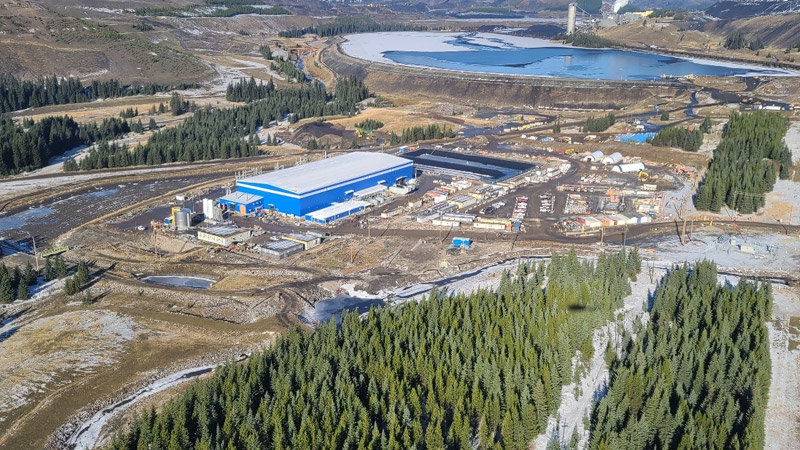For over 100 years the Elk Valley of British Columbia has been home to a thriving mining hub that today is the location of Teck’s four steelmaking coal mines, employing over 4,000 people.
Water quality challenges in the Elk Valley are connected to the long history of mining in the region. The mining process generates large quantities of leftover rock that contains naturally-occurring substances such as selenium, which can be carried into the watershed. If present in high enough concentrations in the watershed, these substances can adversely affect aquatic health.
Since 2014, we have been implementing the Elk Valley Water Quality Plan, a long-term approach with a goal of stabilizing and reversing the trend of selenium and other water quality constituents. This will ensure the ongoing health of the watershed, while at the same time allowing for continued responsible mining in the region.
Our first water treatment facility at Line Creek is successfully treating up to 7.5 million litres of water per day, and in 2020, we met significant milestones on several key water treatment projects to greatly improve water quality in the Elk Valley. This progress included advancing construction of a second facility at our Fording River Operations, and expanding a third facility that uses new Saturated Rock Fill technology developed by Teck, to greatly improve water quality in the Elk Valley.
Fording River South Active Water Treatment Facility
We are applying what we have learned and building a new Active Water Treatment facility at our Fording River Operations, which is currently under construction and scheduled to be completed in 2021. The facility uses a biological treatment process that targets a reduction in nitrate and selenium concentrations in mine-affected waters.
Saturated Rock Fill Technology
Nature often provides the inspiration for technological innovation. Inspired by natural processes, Teck’s Saturated Rock Fill (SRF) technology represents a breakthrough in water treatment technology. SRF provides an effective water treatment solution, using naturally occurring biology to effectively remove compounds such as selenium and nitrate from water.
SRF facilities have several benefits over other forms of water treatment, as they are quicker to build and less complex to operate, have lower capital and operating costs, are able to treat larger volumes of water, and require less energy.
Instrumental in the development of SRF technology is Dr. Lisa Kirk, President of Enviromin Inc and Adjunct Professor of Chemical and Biological Engineering at Montana State University. Dr. Kirk is a member of the Research and Development Team for Selenium Management and has led more than two dozen laboratory studies on SRFs and selenium reduction.
“Saturated rock fill is very effective and very fast at treating water. Teck’s use of SRF to treat mine-affected water is leading-edge sustainable technology that is vital to the continued social license of mineral and energy sectors globally.” Says Dr. Kirk.
Building on our Successes
Since January 2018, our first SRF facility has been successfully treating up to 10 million litres of mine-affected water per day at our Elkview Operations, achieving near complete removal of selenium and nitrate. Building on this initial success, in 2020 we completed a project to double the treatment capacity of the Elkview SRF facility.
We continue to assess and implement the SRF technology to help us reach our water quality improvement goals throughout the Elk Valley.
In 2021, we expect to have capacity to treat more than 54 million litres per day – nearly three times our 2020 treatment capacity. We expect further significant reductions of selenium and nitrate as additional facilities come online
Learn more about our approach to water on our website.

